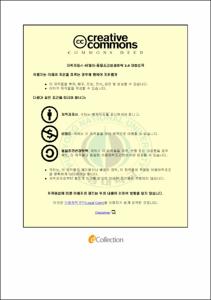In vitro antioxidant and anti-inflammatory activities of Angelica decursiva
- Alternative Title
- 자화전호의 항산화 및 항염증 효과
- Abstract
- Angelica decursiva is widely distributed in hillside, grass land or sparse forest throughout Japan, China and Korea. It is one of the earliest and most important edible herbs in traditional medicine which is used as antiseptic, carminative, lenitive, stomachic, tonic, analgesic, antipyretic, antispasmodic, antitussive, expectorant and stimulant. A. decursiva contains high amounts of coumarins. However, there is no report on its antioxidant and anti-inflammatory activities, especially for the whole plants of A. decursiva.
Therefore, in this study, anti-inflammatory and antioxidant activity of the methanolic (MeOH) extract and its solvent soluble fractions such as the dichloromethane (CH2Cl2), ethyl acetate (EtOAc), n-butanol (n-BuOH) and water (H2O) fractions from the whole plants of A. decursiva were investigated. Antioxidant activities were evaluated by in vitro scavenging activities against 1,1-diphenyl-2-picrylhydrazyl (DPPH), 2,2’-azino-bis-3-ethylbenzothiazoline-6-sulfonic acid (ABTS), nitric oxide (NO•), and peroxynitrite (ONOO). Intracellular anti-inflammatory capacities were determined by in vitro inhibitory activities against lipopolysaccharide (LPS)-induced nitric oxide (NO) production in RAW 264.7 cells. Among these, EtOAc fraction has been found as the most potent antioxidant fraction with the IC50 values 45.50 ± 0.33, 10.07 ± 0.16, 1.29 ± 0.08 and 1.38 ± 0.09 μg/ml in DPPH, ABTS, NO and ONOO- scavenging assays, respectively while CH2Cl2 fraction has been found as the most potent anti-inflammatory fraction with IC50 value of 23.83 μg/ml. Since EtOAc fraction has been found as active fraction in both antioxidant and anti-inflammatory assays, this fraction was selected for further investigation to isolate active compounds. From the active EtOAc fraction, repeated column chromatography was accomplished to isolate five known compounds, including four coumarin derivatives nodakenin, nodakenetin, umbelliferone, umbelliferone-6-carboxylic acid and a phenolic compound, vanillic acid. Among these compounds, umbelliferone 6-carboxylic acid and vanillic acid were isolated for the first time in this plant. Both umbelliferone 6-carboxylic acid and vanillic acid exerted weak scavenging activity of DPPH with an IC50 value of 681.86 μg/ml and 725.79 μg/ml respectively compared with the positive control, L-ascorbic acid of which IC50 value 5.20 μg/ml. On the other hand, vanillic acid and umbelliferone 6-carboxylic acid displayed higher degree of scavenging activities in both ABTS and ONOO scavenging assays (IC50 values of 1.39 and 11.20 μg/ml in ABTS scavenging assay and 1.29 and 8.04 μg/ml in ONOO- scavenging assay, respectively). Furthermore, vanillic acid showed 1.6 times stronger activity than L-ascorbic acid (IC50 value of 2.55 μg/ml) and 2.5 times stronger than trolox (3.62 μg/ml), the positive control used in the assay, in the ABTS radical scavenging assay. In addition, vanillic acid was also found as the potent ONOO scavenger of which scavenging activity was just similar to the positive control L-penicillamine (IC50 value of 1.07 μg/ml). In the anti-inflammatory assay, umbelliferone 6-carboxylic acid exhibited highest inhibitory activity in a dose-dependent manner on LPS-induced NO production in RAW 264.7 cells with an IC50 value of 72.98 μg/ml and showed no toxicity up to the concentration of 125 μg/ml. Umbelliferone and nodakenetin exerted weak suppressive effect on NO production with 40.35 % and 20.72 % inhibition at the concentration at 125 μg/ml. On the other hand, vanillic acid and nodakenin showed no inhibitory effect on the cellular NO production within noncytotoxic concentrations.
Taken together all these results from the present study clearly demonstrated the potential antioxidant and anti-inflammatory activities of the whole plants of A. decursiva and its constituent, mainly umbelliferone 6-carboxylic acid which could be used in the development of therapeutic and preventive agents for oxidative stress-related diseases and inflammatory diseases.
- Issued Date
- 2011
- Awarded Date
- 2011. 8
- Type
- Dissertation
- Publisher
- The Graduate School
- Department
- 대학원 식품생명과학과
- Advisor
- Choi Jae Sue
- Table Of Contents
- I. Introduction- 1
II. Materials and Methods 12
1. Plant materials- 12
2. Reagents and equipments 12
2-1. Reagents 12
2-2. Equipments- 13
3. Methods- 15
3-1. Extraction and fractionation- 15
3-2. Isolation of the active compounds from EtOAc fraction 17
3-3. Assay for the DPPH free radical scavenging activity 24
3-4. Assay for NO scavenging activity- 24
3-5. Assay for ABTS radical scavenging activity 25
3-6. Assay for ONOO- scavenging activity- 27
3-7. Cell Viability in RAW 264.7 cells 28
3-8. RAW 264.7 cell culture and measurement of NO concentration- 28
III. Results- 30
1. In vitro antioxidant activity of MeOH extract and its different solvent soluble fractions of the whole plants of A. decursiva 30
1-1. DPPH free radical scavenging activity 30
1-2. ABTS radical scavenging activity 33
1-3. NO scavenging activity 35
1-4. ONOO- scavenging assay- 37
2. Anti-inflammatory activity of the MeOH extract and its different solvent soluble fractions obtained from the whole plant of A. decursiva in RAW 264.7 cells 42
2-1. Cell viability 42
2-2. Inhibition of LPS-induced NO production in RAW 264.7 cells- 44
3. Isolation of active compounds from EtOAc fraction 46
4. Antioxidant activity of the constituents isolated from the active EtOAc fraction of A. decursiva- 47
5. Anti-inflammatory activity of the constituents isolated from the active EtOAc fraction of A. decursiva 55
5-1. Cell viability 55
5-2. Anti-inflammatory activity of the constituents isolated from the active EtOAc fraction of A. decursiva- 57
Ⅳ. Discussion- 59
Ⅴ. Conclusion- 68
Ⅵ. References- 70
- Degree
- Master
- Files in This Item:
-
-
Download
 In vitro antioxidant and anti-inflammatory activities of Angelica decursiva.pdf
기타 데이터 / 1.1 MB / Adobe PDF
In vitro antioxidant and anti-inflammatory activities of Angelica decursiva.pdf
기타 데이터 / 1.1 MB / Adobe PDF
-
Items in Repository are protected by copyright, with all rights reserved, unless otherwise indicated.